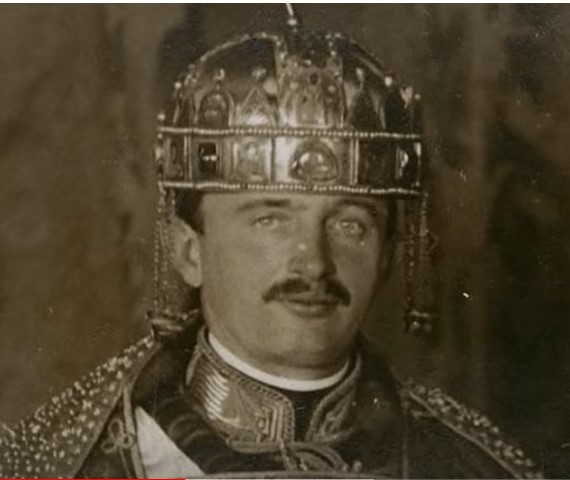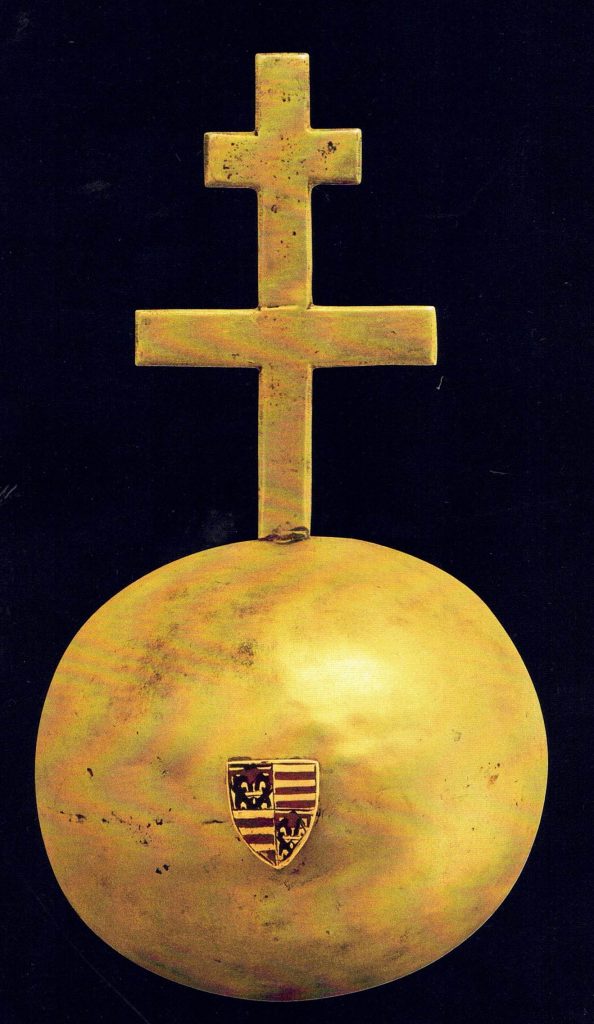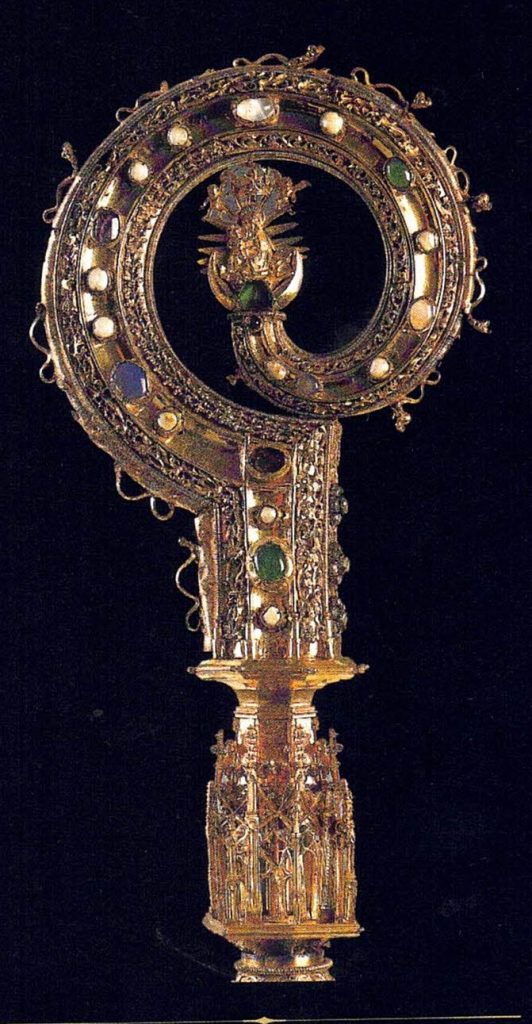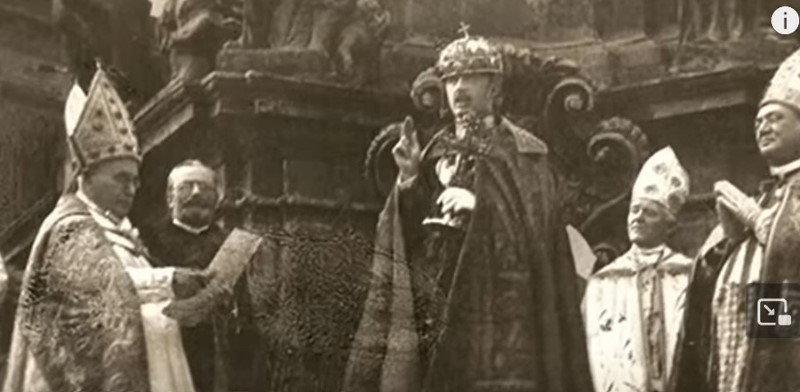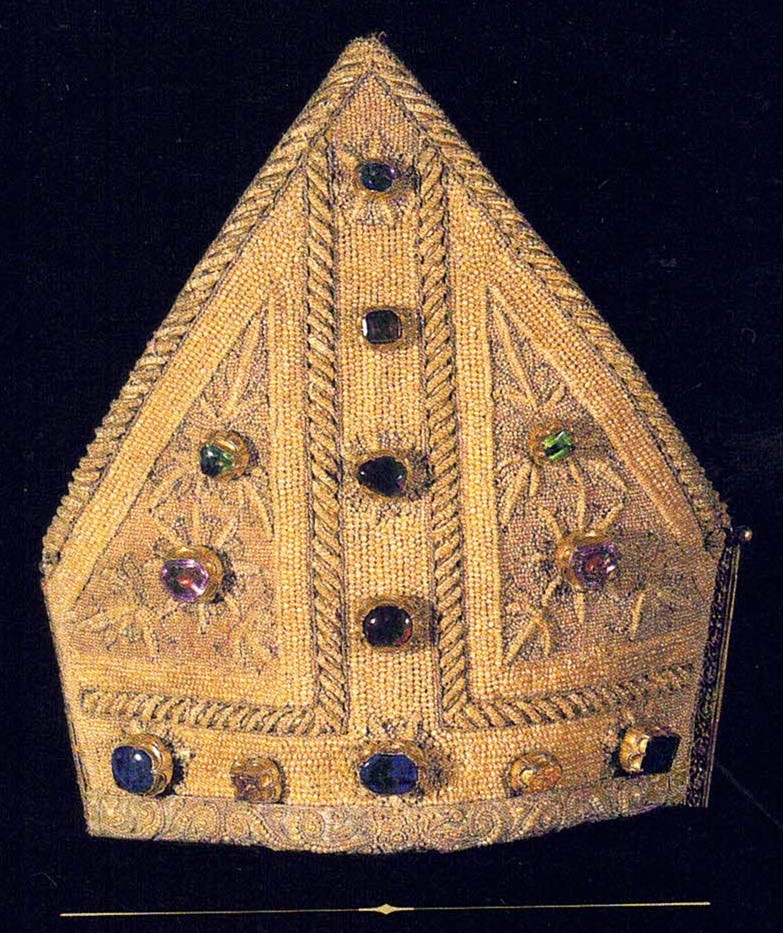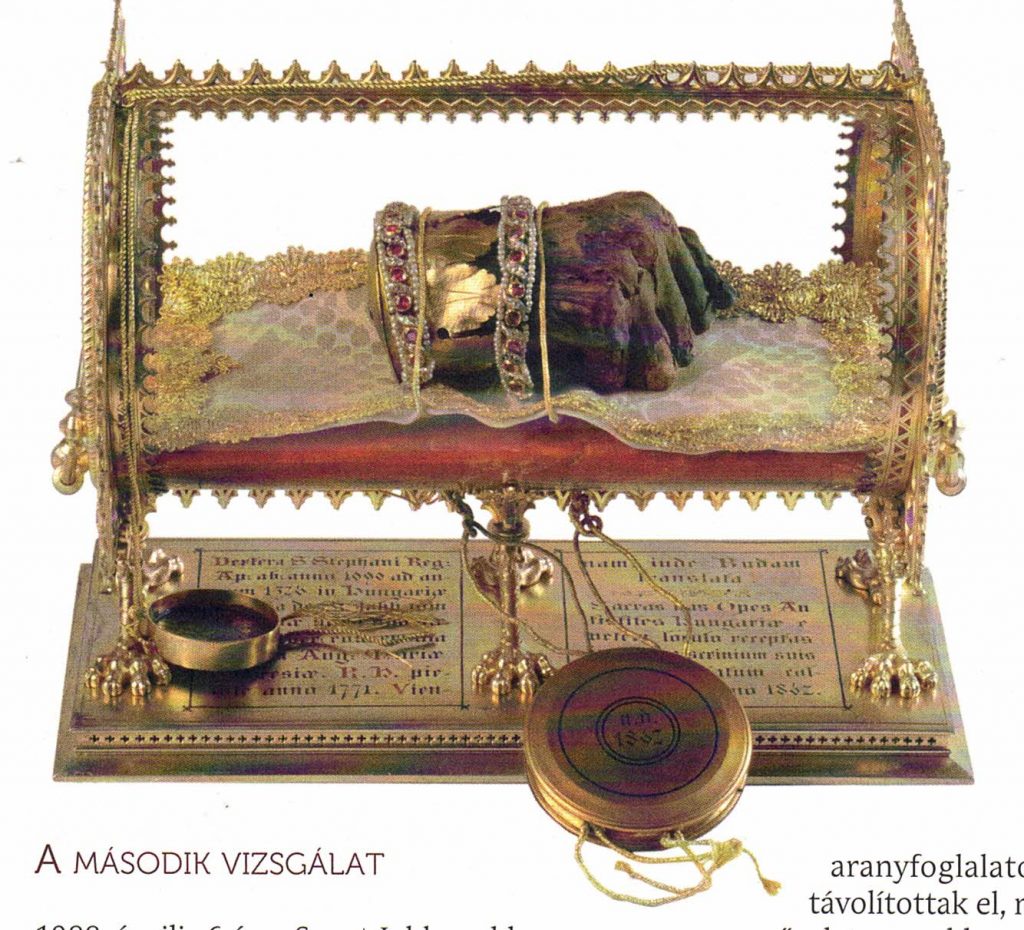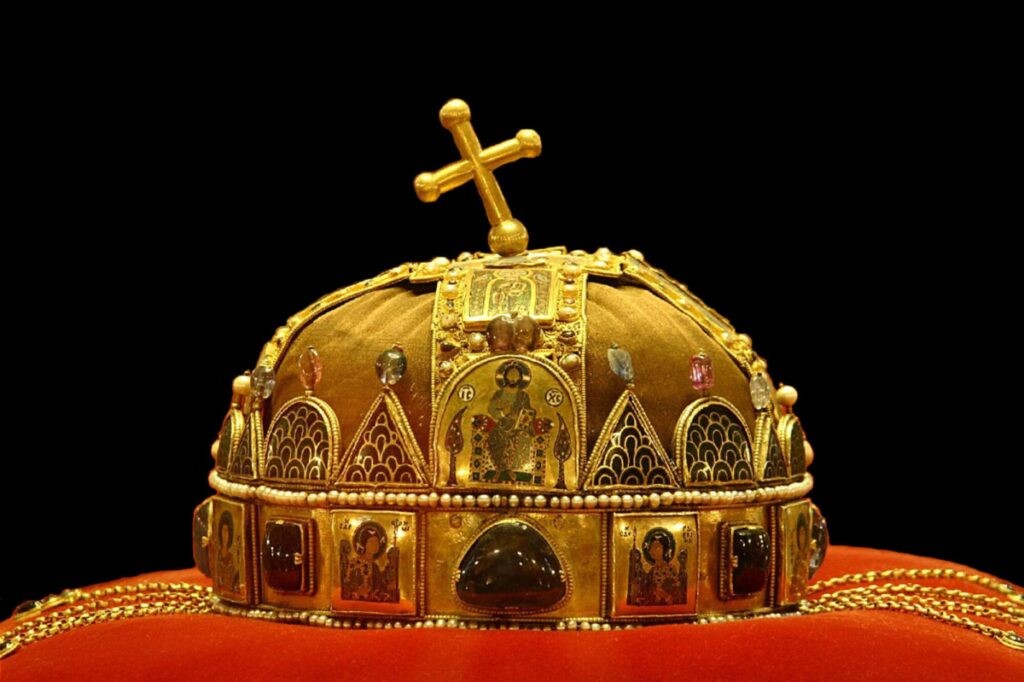
BRIEF HISTORY AND SIGNIFICANCE
After several partial settlements in the early fifth century AD, the main body of Hungarians took possession of the Carpathian Basin as their homeland in what is described as the Hungarian Conquest of 896. These warriors from the east were introduced to Christianity on their arrival and strengthened under the leadership of Grand Prince Géza, father of Stephen. They converted to Christianity under their king, Saint Stephen (997-1038), and grew into a strong nation, eventually becoming one of the principal kingdoms of Europe.
St Stephen foresaw attempts by the German Reich to establish feudal ties with Hungary, which would have made the country dependent on their Emperor. However, Stephen made a brilliant political manoeuvre by sending a delegation to Pope Sylvester II, requesting a Crown-the ultimate symbol of an independent monarchy. In 1000 A.D, Stephen was crowned with this sacred gift and the Holy Crown was destined to become the symbol of the nation’s sovereignty for centuries to come.
Initially, St. Stephen’s Crown represented the emotional desire of the Kings and nobles to have a tangible object for the coronation of the elected monarch. Later it became a legal requirement, officially sealing the election of Kings. Around this time, the belief emerged that the Holy Crown was not just a coronation object but also a religious artefact, emanating mystical influence and symbolising the sovereignty of the land. The members of the Holy Crown – the King and the nobles-were unified under its mystical powers.
Over nine and a half centuries, the Holy Crown became deeply interwoven with Hungarian national identity, and its spiritual significance reached into the soul of the Hungarian people.
The Hungarian Crown, also known as the Holy Crown of Hungary, remains a powerful symbol of Hungarian sovereignty and is one of the most significant artifacts in Hungarian history.
According to the Doctrine of the Holy Crown, the Crown itself has a person-hood that is identified with Hungary. The Doctrine holds that Hungary belongs to the Holy Crown, and everything that Hungary represents is owned by the Crown. The ruler governs only in the name of the Crown but remains subordinate to its will — that is, the will of the Hungarian people.
According to the tradition, the Crown is holy because St. Stephen, first king of Hungary, 1000 or 1001-1038) sealed a divine contract with the Virgin Mary, offering the country to her, and gaining divine legitimacy for future Hungarian kings to rule. The Doctrine signifies that whoever wears the Crown rules by divine right. However, it also grants the right to resist— if the king breaks his coronation oath and becomes tyrannical, the nobility have the authority to resist in order to protect the Holy Crown.
DESCRIPTION OF THE CROWN
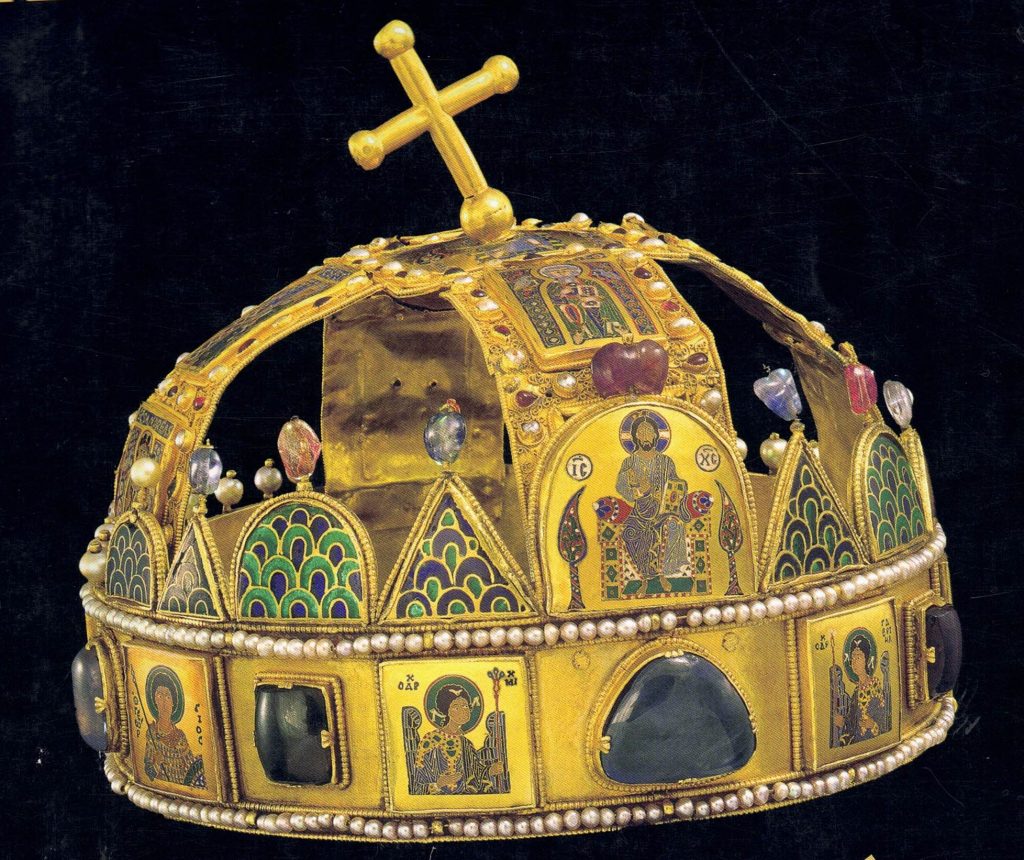
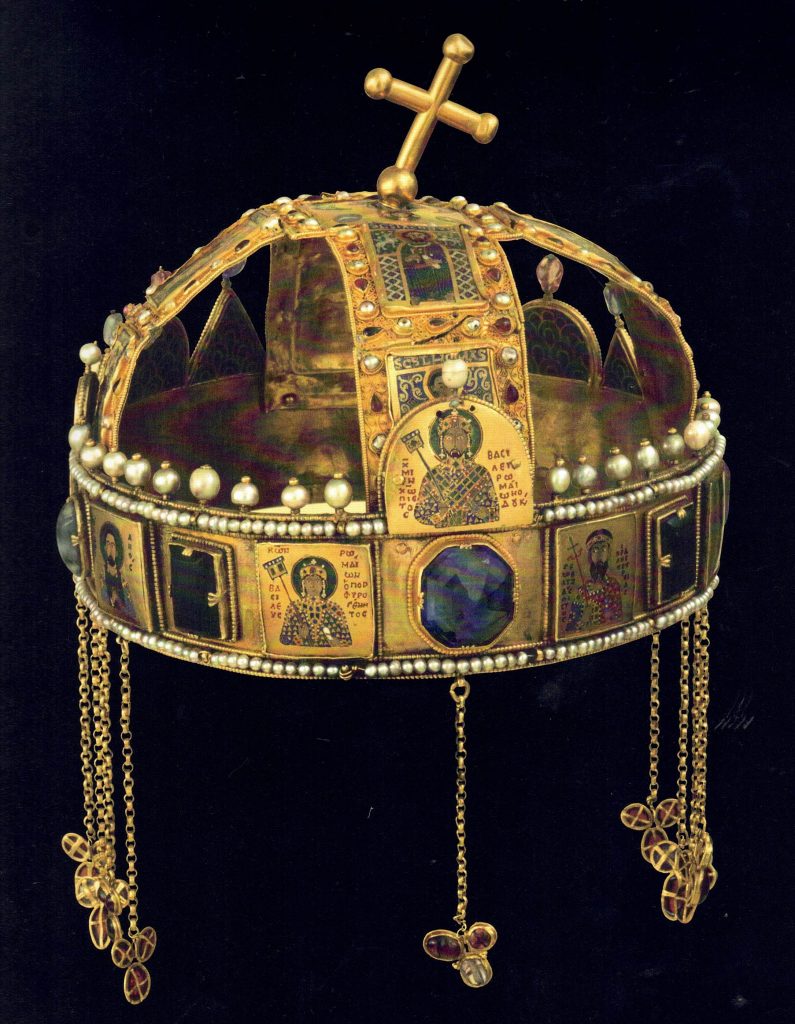
The Holy Crown, as it currently exits, consists of two distinct parts: The upper portion, composed of crossed hoops, known as the ‘Latin crown’. The lower portion, known as the ‘Greek crown’. The upper section is decorated with enamelled portraits of eight apostles, separated by sapphires, rubies, amethysts and pearls. It features Latin inscriptions and Christ on top, transfixed by a golden crooked crucifix. The lower, circular portion is of Byzantine origin, adorned with Greek inscriptions and decorated with gemstones. The distinctive cross was likely damaged in the 17th century. It has remained crooked for centuries and is depicted that way in the Hungarian coat of arms. Some suggest that the upper part of the Holy Crown represents God’s heavenly kingdom, while the lower section symbolises the earthly kingdom. The Holy Crown of Hungary is one of the oldest intact crowns in Europe. The differing artistic styles and techniques used in the enamel portraits, along with the inscriptions-Greek on the diadem and Latin on the bands-suggest that the two sections were created in different periods. However, no known representations show the crown as separate; the Holy Crown has always been shown as one.
GOLDEN TRAIN AND MY MOTHER’S SISTER IBOLYA (DUCI)SOMOGYVÁRI

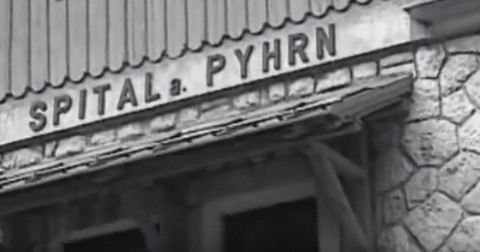
Duci was the sister of Ilona (Ica/Helen) Török (Láng), a young clerk at the Hungarian Central Bank in 1945. During the final months of World War II, the bank arranged for a train-later known as the Golden Train-to transport Hungary’s gold reserves and significant national treasures, including the Holy Crown of Hungary, to Germany for safe keeping from the advancing Soviet forces. However, the Golden Train faced numerous challenges during its journey. The Russian forces posed a constant threat, as did the Allied bombings and partisan attacks in the region. The train’s route had to be altered several times to avoid danger.
The train departed Budapest on the 23rd January, 1945 carrying 30-tonnes of gold reserves. The two trains had 680 bank employees, and when delays occurred, officials and their families endured extreme uncertainty, often facing minus 20-degree temperatures. They had to provide their own food and heating while enduring Allied air raids. The trains eventually arrived in the tiny village of Spital am Pyhrn, Germany (now Austria).
Upon arrival, the treasures were transported to the Benedictine Abbey and monastery building. The bank management officially handed over the assets to Major Lionel C. Perera, a financial advisor to the US Army, on 13 May 1945 as previously arranged.
Duci and the bank staff who returned to Hungary were treated by the new Communist, USSR-controlled, Government as criminals, making employment impossible. They were unable to work or receive government payments, relying solely on family support. Duci, who had no children, was cared for by her husband’s nieces after the death of her husband Dr. László Somogyvári. They were fortunate compared to the high-ranking officials who attempted to return to Hungary and faced far worse consequences.
In 2004, 14 years after the withdrawal of the USSR from Hungary, the Hungarian Central Bank decided that it was time to acknowledge the contributions of the dedicated faithful staff who had served the Hungarian nation faithfully. Certificates were awarded, along with a special trip to Spital am Pyhrn for surviving individuals and their families. A video of the event, with a picture of Duci being interviewed, is included in this website.
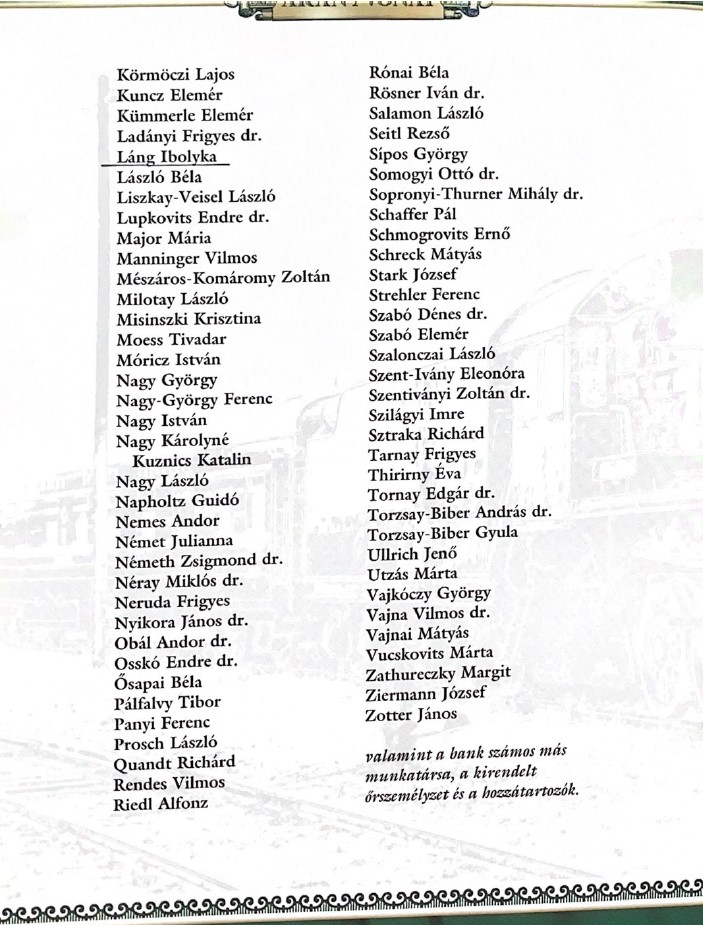
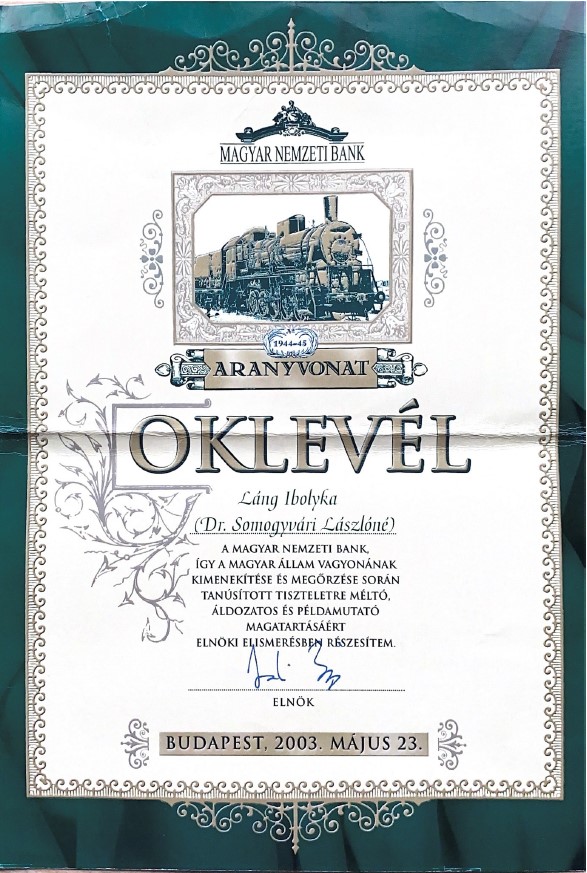
Click here to view video of Golden Train
